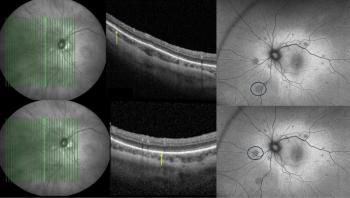
- Ophthalmology Times Europe April 2022
- Volume 18
- Issue 03
Identifying patients at high risk for endophthalmitis post-cataract surgery
A large retrospective analysis was carried out to investigate various risk factors for endophthalmitis as well as the effect of using a hydrogel sealant.
The risk factors for development of endophthalmitis after cataract surgery have been identified as complex cataract procedures, the performance of simultaneous vitreous procedures, a history of diabetic macular oedema or proliferative diabetic retinopathy, male sex and certain cataract types.
A large retrospective analysis using the IRIS (Intelligence Research in Sight) Registry showed that these factors are associated with significantly higher rates of the rare but potentially vision-threatening infection, according to Dr Michael H. Goldstein, president and chief medical officer of Ocular Therapeutix. Incidence rates range from 0.5 to 3.0 cases per 1,000 cataract surgeries. Dr Goldstein pointed out that the incidence rate between 2013 and 2017 was 0.42 cases per 1,000 surgeries, based on IRIS Registry data.
The retrospective analysis was designed to investigate the incidence of endophthalmitis within 30 days of any cataract surgery performed in the United States. The investigators also wanted to determine if use of ReSure Sealant (Ocular Therapeutix) impacted the incidence rate of endophthalmitis one way or the other.
This hydrogel sealant creates an in-situ temporary soft-surface barrier to prevent wound leaks from clear corneal incisions up to 3.5 mm in size following cataract surgery. The researchers therefore compared the incidence of endophthalmitis within 30 days of any cataract procedures performed with and without the ReSure Sealant.
Study design/results
This study was a post hoc analysis of patients who underwent cataract surgery from 1 January 2016 to 1 December 2019. All patients were 22 years or older; they had undergone phacoemulsification with IOL implantation and had completed one or more visits within 30 days postoperatively.
Practices were required to have previously provided data for 30 days or more after surgery. All data were collected from the IRIS Registry (P < 0.001 was considered significant). “This study was one of the largest recent data analyses performed to determine the incidence of acute postoperative endophthalmitis after cataract surgery,” Dr Goldstein said.
Data from more than 6,700,000 eyes (4.1 million patients; 58.9% women; mean age, 70.91 years) were included in the study. More than 3.5 million eyes underwent surgery at practices where ReSure Sealant was available. Almost three-quarters of patients were white.
Approximately 93% of cases were routine and the remainder were considered complex. Two-thirds of the cataracts were the nuclear sclerotic type and the rest, in descending order, were cortical, posterior subcapsular, congenital and traumatic.
Glaucoma procedures were performed concurrently in approximately 3.5% of cases and vitreous procedures in approximately 0.5% of cases. Slightly more than 20% of patients had a history of diabetes. Dr Goldstein reported that the overall incidence of endophthalmitis was 0.633 cases per 1,000 surgeries (95% CI 0.614 to 0.652 cases).
When the data were stratified by the type of cataract, the incidence of endophthalmitis was significantly higher after complex procedures compared with routine procedures: 1.148 versus 0.592 cases per 1,000 surgeries, a difference that reached significance (P < 0.0001). When the data were analysed based on the use or non-use of ReSure Sealant, no significant difference was found in the incidence of endophthalmitis: 0.609 versus 0.660, respectively, which did not reach significance (P < 0.01).
The specific clinical risk factors that the data analysis identified in association with higher incidence rates of endophthalmitis were: complex cataract procedures (odds ratio [OR] 1.67; P < 0.0001); concurrent vitreous procedures (OR 4.32; P < 0.0001); traumatic (OR 4.84; P < 0.0001), nuclear sclerotic (OR 1.18; P < 0.0001) and posterior subcapsular (OR 1.21; P < 0.0001) cataracts; and a history of proliferative diabetic retinopathy (OR 1.53; P < 0.0001) or diabetic macular oedema (OR 2.04; P < 0.0001).
Male sex (OR 1.19; P < 0.0001) was also identified as a significant risk factor, as was multi-ethnicity (OR 2.60; P < 0.0001). “These results provide risk factors for endophthalmitis after cataract surgery from 2016 to 2019 and can help identify patients at high risk of developing endophthalmitis,” Dr Goldstein concluded.
Michael H. Goldstein, MD
E: [email protected]
This article is adapted from Dr Goldstein’s presentation at the American Academy of Ophthalmology 2021 annual meeting. He is an employee of Ocular Therapeutix, Inc.
Articles in this issue
over 3 years ago
Dry eye pearls for young ophthalmologistsover 3 years ago
Biometry 101: Capturing the accurate powerover 3 years ago
A portable solution for high definition slit-lamp imagingover 3 years ago
Addressing COVID-19-associated fungal eye disease in IndiaNewsletter
Get the essential updates shaping the future of pharma manufacturing and compliance—subscribe today to Pharmaceutical Technology and never miss a breakthrough.













































